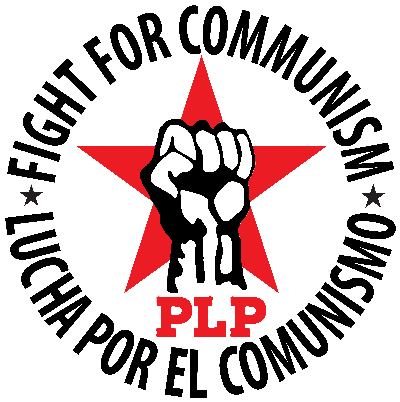The following article advances some possible answers to questions raised in the thoughtful letter, “Can Class Struggle Use the Bosses’ Court?” (CHALLENGE, 4/26/13), especially about the history posed by the law professor whose lecture on the racist history of the U.S. Supreme Court inspired the letter.
There is historical evidence that the U.S. War of Independence was fought mostly to preserve slavery. By the late 1700s, the British rulers were gradually moving away from chattel slavery toward wage slavery due to the rise of industrial capitalism in Great Britain. The leaders of the War of Independence, including southern plantation slave owners and northern shipping and banking interests, all profited from the continuation of chattel slavery. 
The new U.S. government wasted no time in using its power to support slave owners. The Supreme Court’s Dred Scott decision (1857) was a logical manifestation of the intent of the “Founding Fathers.” It stated categorically “that neither the class of persons who had been imported as slaves, nor their descendants, whether they had become free or not” were included within the term “citizen” in the U.S. Constitution nor within the term “people” in the Declaration of Independence.
It’s important to understand the dialectics of the capitalist legal system, in its appearance and essence. The bosses wish to promote the appearance that the courts are the final resort for those seeking relief from the more oppressive aspects of capitalist rule. Dred Scott, for example, was a runaway slave represented by Abolitionists in a lawsuit arguing that since he lived in a free state he should be a free man. They turned to the Supreme Court for relief. But the latter returned him to slavery.
One of the most famous cases used to support this appearance of “relief” from oppression is the 1954 Brown v. Board of Education decision which ended legal segregation in public schools. The case was mounted by the NAACP Legal Defense Fund as part of a 60-year campaign of legal challenges to segregation.
A closer look at the essence of the courts, however, reveals that they are a tool of the capitalist bosses to maintain power. Thus, the Brown decision was primarily a response to the Cold War gains of the communist movement in Asia and Africa, in the wake of the Chinese Revolution and the massive anti-imperialist struggles of the 1940s and 1950s. The U.S. bosses were attacked, correctly, worldwide for the hypocrisy of their system of racial segregation.
In a “friend of the Court” brief filed in the Brown case, the U.S. Justice Department argued that legal segregation had “an adverse effect upon our relations with other countries. Racial discrimination furnishes grist for the communist propaganda mills, and it raises doubts even among friendly nations as to the intensity of our devotion to the democratic faith.” Interestingly, though, through various legal maneuvers as well as the result of capitalism’s overall racism in broader spheres (segregated housing, rent and income disparities), school segregation exists in the vast majority of U.S. cities.
As communists we need to separate our possible tactical use of the courts — as part of a larger mass campaign — from our understanding of how the court system itself serves strategic ruling-class interests. The Court’s function is to legally interpret the Constitution. However, this Constitution is enshrined chattel bondage, whose main purpose is the protection of capitalist property rights. Its most “progressive” part, the Thirteenth Amendment, while abolishing slavery, permits a modern form of slavery — the mass incarceration of mainly black and Latino youth and workers.
In practice, this means that “legal interpretation” of the Constitution is solely a function of the needs of the ruling class in any historical period. At times the Court is used to mediate issues among competing factions of the ruling class, such as President Roosevelt’s efforts in the 1930s to add additional justices when the Court refused to endorse his New Deal programs, or the Court’s decision in Bush v. Gore in 2000 which settled a disputed election.
The appearance of liberal v. conservative justices is largely a smokescreen. Chief Justice Earl Warren, who led the Court to the Brown decision, was a conservative Republican appointed by Eisenhower. Yet he went on to become the liberal bosses’ darling in a string of cases after the Brown decision was used to expand the “rights of the accused” even as more and more workers were incarcerated.
Similarly the arch-conservative Chief Justice John Roberts joined the liberal justices in upholding the constitutionality of Obamacare because today’s capitalist class needs to control healthcare costs to fund mounting imperialist wars. The gay marriage cases, though still undecided, are getting extensive coverage because the bosses’ agenda for the military includes limiting overt discrimination in order to win more recruits willing to die for their interests.
Thus, we oppose organizing appeals to the “legal reasoning” or “humanity” of a court system established to crush the working class and maintain ruling-class power. However, just as communists involve themselves in the daily battles of reform struggles, we also involve ourselves in the bosses’ court system. It is one more arena of struggle, although by far not the most important. There are reasons for communists to take tactical advantage of the legal system and to recruit and train legal workers.
(Part II will discuss the political use of the courts as one tool within a mass communist-led campaign, as well as maintaining the necessity to recruit lawyers and legal workers into the Party.)

